
Dr. Byron Blagburn lays out the basics for practicing veterinariansif you suspect heartworm infection but get a negative antigen result, consider heat-treating the sample.
Department of Pathobiology
College of Veterinary Medicine
Auburn University
Auburn, AL 36849

Dr. Byron Blagburn lays out the basics for practicing veterinariansif you suspect heartworm infection but get a negative antigen result, consider heat-treating the sample.
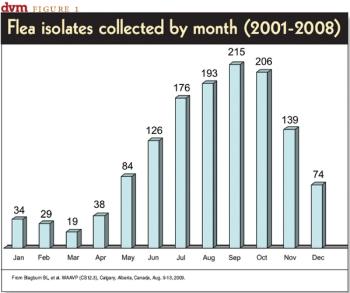
Dr. Byron Blagburn discusses how the control of fleas and flea-induced diseases requires a considerable effort by both pet owners and veterinarians.

An updated list of internal and external parasticides in dogs and cats.

Giardia infections in dogs and cats are caused by Giardia intestinalis (G. lamblia).

Canine and feline heartworm diagnostic, treatment and prevention strategies have changed during the previous decade.

Demodicosis is a potentially severe parasitic skin disease of dogs or cats caused by demodicid mites.

Understanding biological and epidemiological characteristics of important zoonoses is necessary if we are to implement effective control strategies.

Ticks are second only to mosquitoes in the number of diseases that they transmit.

Broad-spectrum internal parasite preventives decrease the potential for disease in animals and people by eliminating roundworms, hookworms, and tapeworms from dogs. The life cycle of heartworms, pet owner compliance, and properties of broad-spectrum heartworm preventives all may affect successful heartworm prevention and internal parasite control.

Information on common parasites such as roundworms, ascarids, hookworms, whipworms, and tapeworms.

The latest information on ehrlichiosis, anaplasmosis, Lyme disease, Rocky Mountain spotted fever, cytauxzoonosis, babesiosis, hepatozoonosis, and bartonellosis.

Information on roundworms, ascarids, hookworms, tapeworms, giardiasis, cryptosporidiosis, and toxoplasmosis.

The latest information on demodicosis, scabies, otoacariasis, cheyletiellosis, and cat fur mites.

The latest information on giardiasis, coccidiosis, neosporosis, and trichomoniasis.

Canine and feline heartworm diagnostic, treatment and prevention strategies have changed during the previous decade.

Of all the diagnostic techniques used to detect gastrointestinal parasites, none is more accurate and reliable than centrifugal fecal flotation when it is performed properly.
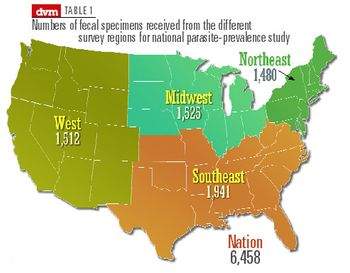
Given the number and kinds of effective de-wormers that are available, parasitologists often are asked why parasites continue to be prevalent and important disease agents of companion animals.

Efforts must now focus on increasing awareness of the zoonotic risks associated with many of these parasites and improving pet owner compliance.
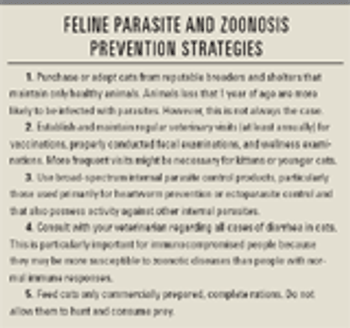
Cats are host to a variety of internal and external parasites. Despite the documented prevalence and zoonotic importance of these parasites, many pet owners and some veterinarians aren't convinced that comprehensive feline parasite control strategies are needed. This viewpoint may stem from the previous lack of safe, effective, and convenient broad-spectrum parasiticides and the difficulties in acquiring adequate fecal samples. Fortunately, newer broad-spectrum agents (Table 1), particularly those with label claims against heartworms and fleas, allow veterinarians to eliminate a higher percentage of feline parasites. Let's review some of the key feline parasites and discuss new strategies for controlling them.
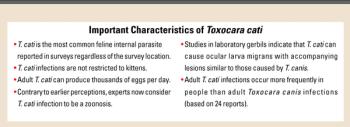
The CAPC guidelines are based on the concept that awareness of heartworms and other parasites can increase compliant use of broad-spectrum agents.
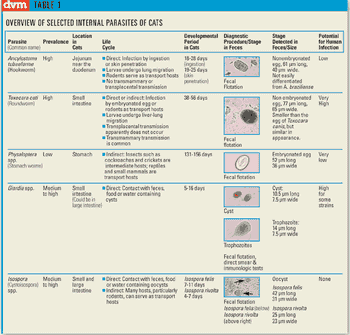
Most of us are aware that numbers of cats have surpassed dogs as pets in United States households.
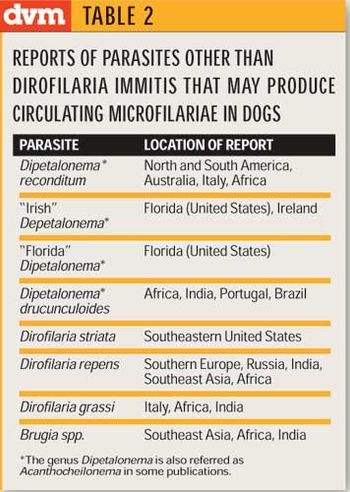
Dr. Byron Blagburn offers support to understanding why the life cycle and epidemiology of heartworms is required for diagnostic, treatment and control strategies.
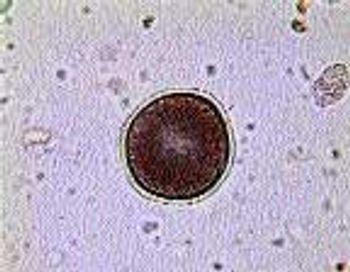
Byron Blagburn sheds light on the problems internal parasites can cause to the health of cats and their owners.

Dr. Byron Blagburn takes a look at the advancements made in heartworm prevention and the impact they have made.
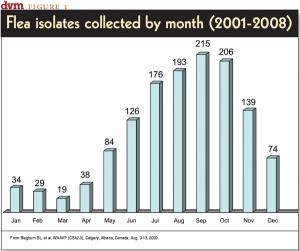
Published: May 1st 2010 | Updated:

Published: August 1st 2009 | Updated:

Published: August 1st 2009 | Updated:

Published: August 1st 2009 | Updated:

Published: August 1st 2009 | Updated:

Published: August 1st 2009 | Updated: